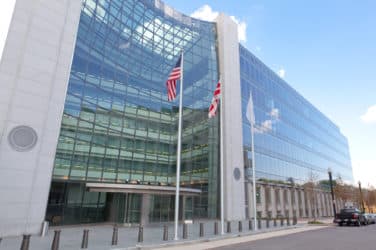It’s all about protecting the small investor, John Q Public, isn’t it?
That’s one of the primary goals of the U.S. Securities and Exchange Commission. In his first public speech before the Economic Club of New York recently, Jay Clayton, the new chair of the SEC, told attendees the regulator has three primary missions: protect investors; maintain fair, orderly, and efficient markets; and facilitate capital formation.
So, what does a stock buyback have to do with any of these?
Clayton said the SEC measured its effectiveness in those three missions by how they affected “the long-term interests of the Main Street investor. Or … how does what we propose to do affect the long-term interests of Mr. and Ms. 401(k)?”
In a commentary originally appeared on The Hill, author J.G. COLLINS wrote that the SEC should move immediately to reform the SEC’s regulation of stock buybacks by issuing companies. Indeed, universities, public sector pension funds and other large institutional investors with a public trust should insist upon it.
What follows is the op-ed, as printed in the July 26th edition of The Hill:
During the 12 months ending in March 2016, the Fortune 500 reportedly spent in excess of half a trillion dollars on stock buybacks. Other, smaller, companies have been similarly engaged in buybacks. All these buybacks operate in the background of the capital markets.
Typically, they are disclosed only in quarterly press releases and earnings calls, so investors and technical analysts don’t know whether share price accretion is occurring because the fundamentals of the business have improved, because the capital markets have imputed a higher value to a sector, or because the issuing company has repurchased shares.
This isn’t true in foreign capital markets. In securities markets like Hong Kong, share repurchases must be reported at least 30 minutes before the next trading day. In London, regulators require buyback programs to report share buyback details by noon the following trading day. Some foreign markets also require the share buyback programs be authorized by a vote of the shareholders, not merely approved by the board, as in the United States.
There are three things wrong with the current law with respect to buybacks in the United States:
First, large buybacks can mislead retail investors into believing the demand for shares in the market is stronger than it is. According to Mary Jo White, the former chair of the SEC, even the “safe harbor” of SEC Rule 10(b)-18, which allows stock buybacks with restrictions, does not safeguard companies from the consequences of making illegal repurchases, as would occur, for example, if a repurchase was made with insider information.
But White is reportedly on record as saying that any analysis of buybacks that would prove alleged market manipulation by an issuing corporation cannot be monitored by the SEC because the data on buybacks is not collected.
Requiring daily reporting of buybacks, a suggestion long considered by the SEC, would allow retail investors and technical analysts the ability to assess whether movements in stock prices are holistic from within the market or from buyback programs, and they would give the SEC a much needed tool to investigate abuse and manipulation by the issuers.
Second, since so many executive compensation programs are tied to earnings per share and stock bonuses, buyback programs tend to favor the private interests of executive managers far more so than shareholders. A $1 million profit shared among 10,000 shareholders is the same profit if it is shared among only 5,000 shareholders.
But it makes a considerable difference in the grant of stock options and executive bonuses tied to share price performance because the value of the remaining outstanding shares would effectively double.
Finally, share buybacks tend to disabuse managers of the notion of using spare capital for training, capital investment, wage increases, research and development and other business-oriented investment. While, arguably, the low-growth economy of the last few years may have offered limited opportunities for those kinds of investments, one of the principal duties of executive management is to find new opportunities to deploy excess capital.
If executives cannot innovate or locate new investments or new sources of revenue, it would seem that they are falling short in a major element of their duties.
This is not to say, however, that every buyback program is bad. There may be instances where a repurchase of outstanding shares, even on the open market, serves the interests of shareholders. But without sufficient transparency, “the long-term interests of Mr. and Ms. 401(k)”, to use Chair Clayton’s words, are ill-served.
J.G. Collins is the managing director of the Stuyvesant Square Consultancy.






